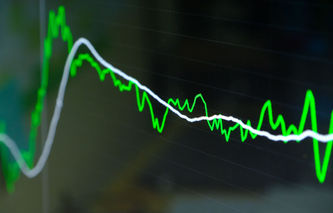Definition
The term bear market refers to an extended period of time during which there is a decline in the value of equities traded on a stock market. While there is no strict definition, a decline of 20% or more in a market index would be considered a confirmation of a bear market.
Explanation
Generally, a decline of 20% or more in a market index, such as the S&P 500 or Dow Jones Industrial Average, over a period of at least 60 days would be classified as a bear market. As investor fear of capital losses grow, the sell-off of common stocks continues, and a pessimistic outlook for the market becomes widespread. Bear markets are typically the result of an economic recession. Historically, bear markets average around one year in duration.
Short-term declines in a market index are classified as "corrections." When a market experiences a correction, investors can oftentimes find many stocks selling for prices that represent a good value.





